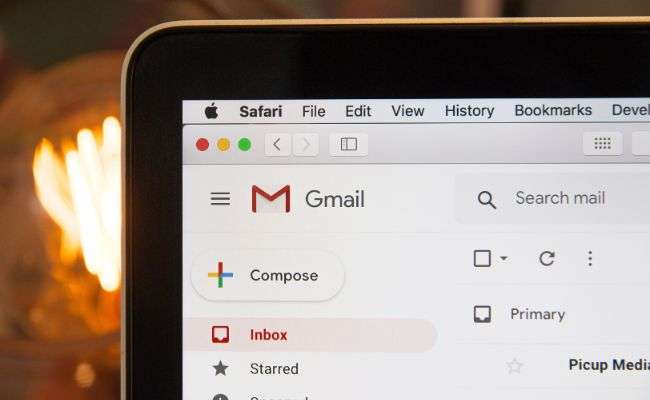


If you are new to the crew and want to improve your writing skills in email writing, welcome! Here is how you can do it with the help of a bunch of essentials of effective email writing. Have you ever found yourself getting motivated to write emails? We too have.
This is going to happen with super easy practice whenever, and where ever you are. Wear your email writing cap where ever you go. Once you start knowing to select and organize words, you get better at crafting an email. It is easy and powerful.
With fewer strokes of practice and super important steps, you get used to writing emails. Writing engaging emails is a skill that most professionals want to have. The most popular method of business communication is email writing.
Sending poor emails may make or kill your career. This post is going to surprise you with some pro tips for improving your skill of writing emails. If you use these basic techniques in your writing, you will be able to send emails with confidence to anyone.
This removes your post-send stress. But first, let’s discuss your goals. What do you hope your email will do?
For crafting an email, we need an accurate selection of words. We put together the words and start writing. Email writing is like preparing a meal where a cook uses ingredients with care. We need to select and organize the words with great care.
Let’s first define the goal of writing an email. Before writing emails, you should have thorough research and ask yourself some questions.
These elements would help you in writing effective and compelling emails. Think if you have received a bad email and you have spent much time to understand it. you may overlook that message.
So it’s time to first plan your email writing goals. After defining your objectives, you are ready to be on the plank of writing emails.
You must persuade the recipient to open the email.
Your email must leave the reader with the desired impression.
It must inspire the receiver to perform the desired action.
The very first thing a recipient notices is an email address. Impressions are important. A hiring manager may get the wrong image of you if you send him an email to awesome146@gmail.com. This can lead to bias. Always make sure you send business-related emails from a business-related email account.
The subject line of the email gives an overview of the contents it contains. It is a super important part of email writing. It is an attention grabber, as well as, tells the summary of the written content inside.
Your email’s success depends on its subject line. It determines whether someone opens your email. Alas!, a majority of people have trouble with this section. A well-written subject line works like a prompt and delivers important information.
Get started for greeting when you sit down and write the e-mail. For formal greetings when you write emails to official institutions, you should address them with the word Dear. But if you write to your colleague or friend, you become casual and address him using formal words of Hi, Hello.
You should use the recipient’s name to personalize emails when communicating with someone for the first time. Provide precise details about what they do and don’t forget to introduce yourself.
This indicates your research and true interest in them. Also, it can set the tone for future interactions and aid in developing a connection with them.
After you’ve finished the salutation/greetings, you can begin writing your email. Whereas the subject line determines whether your email is opened, your opening phrase defines how your email is read all the way through.
A financial consultant and author, advises adhering to the “20-second rule” when composing emails. This means that you should try to convey your primary argument within the first 20 seconds of the email, as this is the length of time that many people will spend reading it.
If it’s an introduction, you can start with a topic that you know the receiver will find interesting. The social media profiles of the recipients teach you a lot. Maybe they tweeted something exciting or published something on LinkedIn earlier that you can use as a reference.
This will enable you to establish rapport and show you’re not sending daily emails to various recipients.
We spend a lot of time reading emails. And as a result, many people quickly read emails to extract the main points before moving on to the next.
With this in mind, you should make your email as easy to read and scan as possible. This comprises:
Use formatting methods that highlight key elements for the reader, such as bolding or italicizing.
Avoid using jargon or technical phrases that visitors might not be familiar with, and use lively language.
No one likes a three-page essay. Consider it like this: What should your receiver remember most from the email, and is there a specific action you want them to take?
After there, create your email and proofread it to ensure that each addition is helping you achieve your goal. If it isn’t, get rid of it.
Here are multiple fonts used in the email, in various sizes and colors. As a result, the eye is confused and feels a little overwhelmed.
Furthermore, the message is missed because your recipient is too distracted by all of these competing aspects for their attention.
As a general guideline, stick to one font. If you must use a supplementary one, do so sparingly. Apply the same rule to color.
If you use a non-English keyboard, your fonts might not appear correctly on the other person’s device. Use web-safe email typefaces instead, such as:
A professional email must have a consistent tone. It’s typically an excellent idea to begin an email with a pleasant, friendly tone. Here are a few examples:
But, you should avoid overusing exclamation points and emojis, which can come across as unprofessional to some audiences. To determine the style of an email, consider the seriousness of the content and the person to whom you are writing.
It’s time to close the email once you’ve finished writing its contents.
Keep your closing brief and simple; don’t try to be fancy.
Stick to the tried and tested concluding lines instead, and you should be fine.
The most popular concluding lines are listed below for your selection.
Use a compelling call-to-action (CTA) to make it clear what you want the receiver to do next. This can involve making a call, filling out a form, or visiting a particular website.
In the end, try to end your email with a formal signature. Add your full name, your position title, and the company that you work for in your email signature. you may add the company’s website and social media buttons.
When the initial email turns into a lengthy conversation, be careful to use easy signatures. It is probably best to omit the company website and social media accounts from emails to coworkers. By saving two or three signature templates and using the appropriate ones in the emails you send, you may simplify things for yourself.
An email chain can get increasingly complicated and challenging to follow as additional recipients are added. When use the CC and BCC fields in an email, exhibit good manners. Use the CC field in emails if you want a contact to see them and reply.
Use the BCC field when sending emails to large lists of people that don’t require a response. If you believe the receiver won’t need to be included in further exchanges, you can alternatively use BCC.
While using these fields, the recipient’s relevance should be your first concern. Despite bombarding the appropriate stakeholders in emails, you want to make sure people get the information they require.
It is surveyed that most people read their work email shortly after or within an hour of waking up.
In fact, the most common time for email reading happens to be early morning. Open rates begin at 6 a.m. but often rise between 9 a.m. and noon local time.
Given this information, you can choose between two approaches: Send your email first thing in the morning, when you know they’ll be scrolling, or wait until it’s less busy. A trial and error practice figures out what is the best work for the staff when emailing them.
Take into account regions while sending an email to someone in another state or nation. One else’s noon maybe your 7 p.m. As a result, consider who your recipient is and when they will be most responsive to your email.
In fact, the most likely scenario for email reading is in the morning. Rates typically peak between 9 a.m. and noon start time. With this knowledge, you have two options: Send your email first in the morning, when you know they’ll be scrolling, or wait till it’s less busy.
On the other hand, when you send an email in the morning, it may be ignored. If you wait until a later time, your email may never be opened. It takes some trial and error to figure out what works best for the staff when emailing them.
You’re nearly there. Don’t make a mistake in the last stretch. Consider spending hours drafting a perfect message just to have it rejected because the email contains several spelling and punctuation problems.
After you’ve finished writing your email, copy and paste it into Microsoft Word or Google Docs to double-check the grammar, phrasing, and spelling.
You may also use free grammar checkers like Grammarly to automate the process while you’re writing.
After that, read the message loudly to ensure that the phrases aren’t too drawn-out, awkward, or robotic-sounding. Your email copy should sound natural.
All these aid in keeping the reader’s attention on your content and away from the other parts of your email.
A thoughtful follow-up email can assist in ensuring that your communication is viewed. Working professionals are frequently overburdened with meetings, deadlines, and duties. It’s not uncommon to neglect to answer an email right away.
So don’t follow up too quickly. Wait a few days unless the message is urgent
Email writing is like you have a conversation with others. As you maintain etiquette in an in-person meeting, you should also consider that tone and etiquette in composing an email. Make sure your tone and manners are respectful and appropriate for the recipient.
One of the most common issues with email writing is a lack of concern for the recipient. Think about the following questions before writing an email.
Why am I contacting this individual via email?
Is this the right choice to contact?
what I’m attempting to accomplish?
Is my message clear and concise?
Is it best to discuss this in a meeting?
Is each line beneficial or detrimental to my goal?
This is especially necessary when emailing someone new, but it is also useful when contacting a colleague.
It’s common to feel as though you should write emails in a more formal tone if you don’t speak English as your first language. English natives tend to write more casually. Their work reads like two people conversing.
An immediate grammar suggestion that will always make you seem more native is as follows: Stop writing mostly in passive voice and use the active instead.
An active voice indicates that a subject is carrying out the action of the verb. “The passive voice, in contrast, indicates that the subject is acting on the verb. Writing in an active voice seems more human.